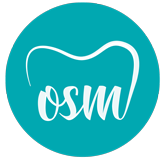Orthodontists and dentists are both oral health specialists who have studied for years in university to treat a wide range of issues relating to the mouth, teeth and jaws. However, they’re different in very important ways. In this article, we’ll discuss these differences and how both help patients achieve great oral health and confident, attractive smiles, as well as how it’s helpful to choose a local orthodontist for your treatment.
What Does a Dentist Do?
A dentist is a general health practitioner – a bit like a GP for your teeth and oral health! They do exceptional work treating tooth decay and gum disease, helping to prevent oral health problems, and even repairing broken teeth. They treat patients of all ages, diagnosing oral health issues, treating them and giving advice on how to care for your teeth and gums at every stage of life.It is important to know that while some dentists may also do some orthodontic treatment, they are not specialists.
What Does an Orthodontist Do?
Many dentists go on to different specialised fields – oral and maxillofacial surgeons perform complex surgeries on the face and jaw (like corrective jaw surgery or cleft palate surgery), prosthodontists specialise in prosthetics to replace lost or damaged teeth (crowns, dental implants, dentures, etc.), and paediatric dentists specialise in children’s oral health, working with infants through to teens.
An orthodontist is a qualified dentist who has specialised in orthodontics, an area of dentistry that focusses on tooth and jaw alignment. They diagnose overbites, occlusions (poor contact between teeth), tooth misalignment, gaps, crowding, and jaw problems,providing treatment to correct this misalignment.
Most orthodontic treatments take at least 6 months to get results and involve regular trips to your orthodontist every 6-8 weeks. Having a local specialist close to home is a great help for most patients, making appointments easy to get to and ensuring you have quick access to your orthodontic team if you have a question, concern or problem regarding your treatment, oral health or oral comfort.
Why is Tooth and Jaw Alignment Important
Crooked teeth or a bite misalignment doesn’t just affect your self-confidence – it also affects the overall health of your mouth and your ability to use your teeth and jaw properly while speaking and chewing.
Crooked and crowded teeth are uncomfortable and trap food more easily, putting teeth at risk of decay and gum disease. An overbite can damage the roof of your mouth and make chewing a challenge, while a crossbite can create difficulty speaking clearly.
Having your teeth and jaw properly aligned reduces wear on your teeth, makes maintaining a healthy mouth easier and improves quality of life significantly – especially when performed in the adolescent years when the jaw and teeth are more easily manipulated.
In your bi-annual visits to your dentist, they can evaluate your teeth and jaws and may recommend that you see an orthodontist for treatment.
What is Orthodontic Treatment?
When you visit an orthodontist for an assessment, they will evaluate your overall dental health as well as checking your teeth and jaw alignment for potential issues. Usually, they will take x-rays, photosand moulds of your teeth to help determine the kind of treatment that would work best for you.
Orthodontic treatment generally involves a few different strategies and focusses on manually – and gradually – pushing and pulling your teeth to where they should be. This is a slow process that involves quite a bit of patience, but it delivers fantastic, lifelong results if you stick to your treatment plan. This could include:
Braces – Braces can be metal or ceramic (transparent), or attached to the back of your teeth (lingual braces) depending on your preference. They are fixed to your teeth for the entire treatment period, which may be anything from 6 months to 3 years. Every month or so, you’ll visit your orthodontist who will check on the condition of your braces and your progress, and tighten the braces slowly at certain points in order to shift the teeth gradually. There is some discomfort with this method, but it is very effective and patients can see the results.
Clear Aligners (Invisalign) – These are clear trays that fit over the teeth, so they are fairly unnoticeable and can be removed for eating or cleaning, which is very convenient. These aligners are custom made for each patient and come in several sets, each securely fitted and slightly different, slowly pushing teeth into their correct position. This is a great solution for more minor cases of tooth alignment, and patients love that that are removable and don’t involve any wires being fixed to their teeth.
Retainers – A retainer is usually used after correcting alignment issues, or to hold teeth in their new, correct position after treatment with braces or Clear aligners is complete. As most orthodontists are fond of saying, teeth have very long memories, so if they aren’t supported by a retainer, they tend to try move back to where they were. A retainer can be permanently fixed behind your teeth or can be removable, where you have to wear it for a number of hours each day.
As you can see, orthodontic treatment is complex and important, and it’s essential that it delivers results that not only look good but support your oral health and function. The best way to achieve this is to choose a local specialist that is close to home, where you feel welcome and can get quick assistance when needed.
Chat to Your Orthodontist in Frankston or Dandenong About Creating a Healthy, Happy Smile
If you are interested in getting an assessment of your teeth and jaw alignment, book an appointment with our team today. As local specialists serving the Frankston and Dandenong communities, we work to create a welcoming space for patients as well as offering the very best tooth alignment solutions.

